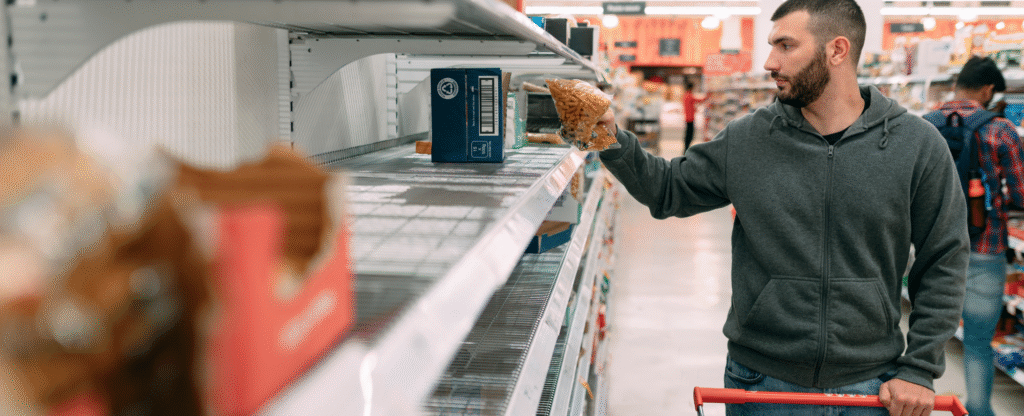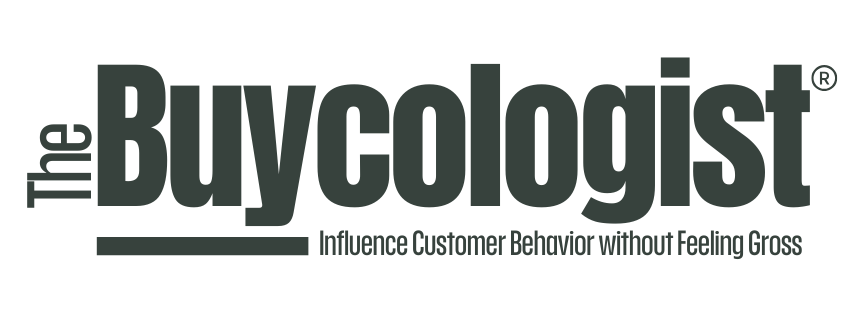Tariff Trouble Ahead: How Scarcity and Uncertainty Are Shaping Consumer Behavior (Again)

Remember the Great Toilet Paper Outage of 2020?
You probably do—vividly. The bare shelves. The frantic store runs. The group texts asking if anyone had a spare roll. In the early days of the pandemic, spotting a pack of Charmin felt like discovering gold. It wasn’t just about hygiene—it was about psychology.
That moment wasn’t just a glitch in the supply chain. It was a masterclass in consumer behavior. And now, as looming tariffs spark similar ripples of uncertainty and scarcity, it is time marketers relearn what COVID already taught us: fear, not features, moves markets.
Scarcity and Uncertainty: The Twin Forces Driving Urgent Behavior
In behavioral psychology, scarcity isn’t just a marketing trick—it’s a primal trigger. When people perceive that something is limited, rare, or about to become unavailable, it lights up their desire to act, to obtain, to purchase.
The object becomes more valuable simply because it might soon be out of reach.
Uncertainty amplifies this. Not knowing when or how change will hit—be it a price hike, a shortage, or new regulation—creates anxiety. And anxiety is an action driver. People crave resolution. Relief. Control. So, they do something. Anything. They hoard. They stockpile. They make emotionally charged decisions, not rational ones.
That’s what we’re seeing again with tariff talk.
Consumers aren’t just responding to the potential of increased prices. They’re responding to anticipatory scarcity—the sense that what they want might soon cost more or disappear entirely. At the same time, the ambiguity of when and how this will unfold creates a background hum of anxiety that pushes people toward impulsive or protective purchasing.
Behavior Always Serves a Purpose—Even When It Seems Irrational
Here’s where most marketers miss the mark. They see panic buying as irrational. Silly. Overblown.
But in psychology, behavior always serves a function. Even the “extreme” stuff.
Consumers aren’t buying in bulk because they love cluttered closets. They’re doing it to manage discomfort—to regain a sense of control in the face of an unpredictable future. And when that discomfort is stoked by smart messaging (intentionally or otherwise), it becomes a powerful motivator.
Marketers don’t have to manufacture fear (in fact, pro tip: DON’T. This rarely works out well for brand trust and credibility). They just have to mirror what people are already feeling—and offer a solution that feels relevant, safe, immediate, and relieving.
The New Scarcity Playbook for Brands
So, what should brands and marketers do now? Whether you sell household staples or luxury goods, tariffs offer a fresh opportunity to apply behavioral science responsibly. Here’s how:
1. Acknowledge Anxiety Transparently
Don’t gaslight your customers. Don’t pretend nothing’s happening. Instead, acknowledge the reality: uncertainty is in the air. Be honest about potential impacts while reinforcing your commitment to product availability, fairness, and service.
2. Use Time-Limited Offers with Purpose
Rather than inflating urgency with artificial countdowns, tie your messaging to real changes. “Stock up before July 1, when new tariffs take effect” is far more effective—and ethical—than “Only 3 left in stock!”
3. Highlight Reliability and Value Over Hype
When uncertainty rises, trust becomes a brand’s currency. Instead of pushing panic, reinforce stability. Show that your brand can be counted on. Customers don’t just want deals—they want confidence.
4. Offer Smart Bundles for ‘Stock-Up’ Behavior
Instead of just warning consumers, make it easy for them to act wisely. Curated bundles, pre-built reorder kits, or loyalty perks tied to repeat purchases allow people to feel smart—not manipulated.
5. Study Your Pandemic Lessons
Look back before you look forward. What worked in 2020? What didn’t? Who communicated well—and who fell flat? The brands that learned from COVID’s consumer chaos will be the ones who navigate tariff-related tension with credibility and clarity.
Scarcity Isn’t a Gimmick. It’s a Gut-Level Trigger.
Let’s be real: most marketers know scarcity works—but few understand why. It’s not about manufactured FOMO or pushy countdowns. It’s about calming the quiet panic in a customer’s brain.
When we get that right—when we truly understand the psychology of uncertainty—we don’t just drive conversions. We build brands that customers trust when things get weird. Again.
Because if the pandemic taught us anything, it’s this: what people buy isn’t just what they want. It’s how they cope.
Ready To Claim Your Unfair Advantage?
Then, stop messing around and join The Buycologist Brain Trust! Each month, our newsletter delivers no-BS consumer insights and strategies that will elevate your skills, impress your colleagues, and set you apart in the marketplace.
You can take that to the bank.
